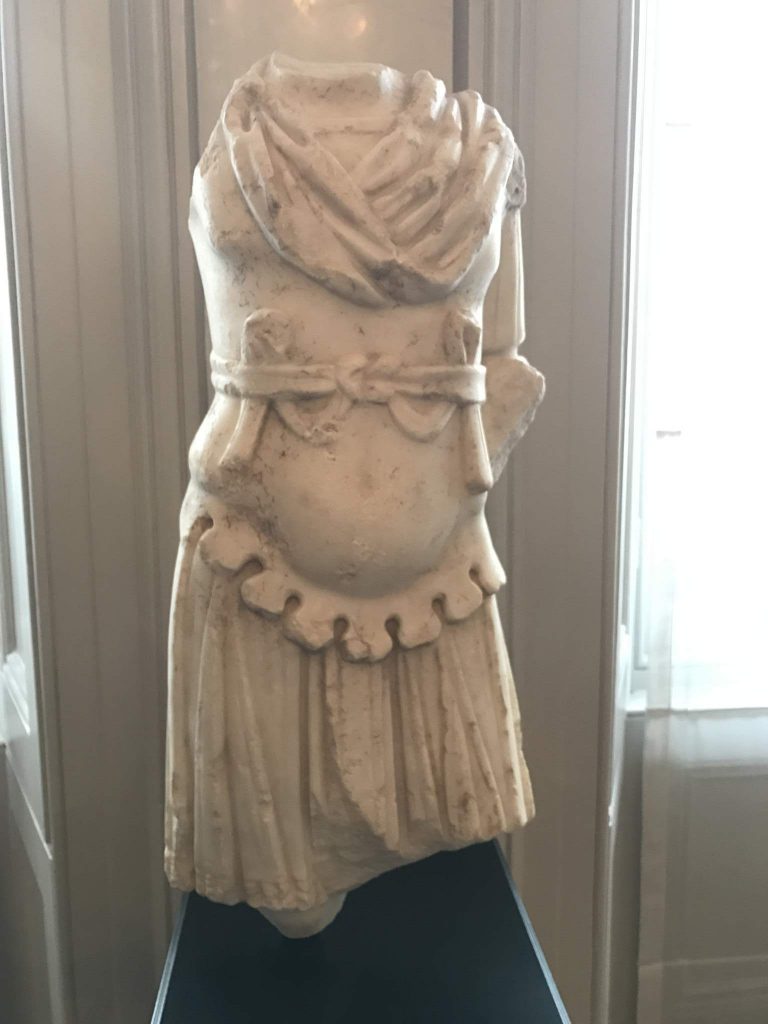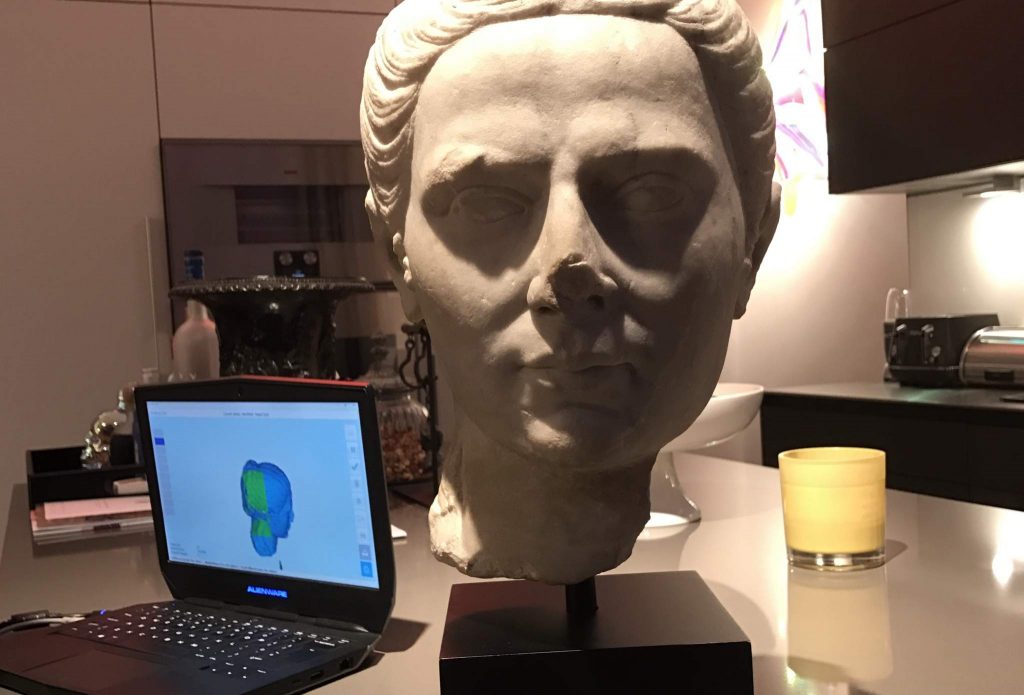3D Printing Industry are on the road with 3D scanning cultural heritage project Scan the World as they head to the south of France. In this article we take a peek inside the private collection of historian and commodity hedge-fund manager Christian Levett.

In this first of a series of features, 3D Printing Industry get a chance to see some of Christian’s most prized pieces, and speak with him at his London residence on the topic of 3D scanning for accessibility, as he comments,
Not everyone can have a Roman statute in their house! So [the Scan the World project] is a great way of documenting the collection physically, and if you can do that, then that allows other people to study the pieces.
Starting small
Christian has been collecting from a very young age, and he has a particular interest in historic battles,
I started collecting when I was about 7 or 8 years old and I used to collect coins, mostly 19th and early 20th century coins and first and Second World War campaign medals because they were cheap and there happened to be a shop that was quite close by where I lived in south end in Essex.
A cabinet of 14th & 15th century coins from the 100 years war stands in one corner of Christian’s living room. The walls feature some more contemporary works including an original by Damien Hirst, and in the center of the windows stands a proud, though fragmented, Torso of a Roman Soldier from the 2nd century BC.
The breadth of his collection, from paintings and sketches through to sculptures and carvings, transports a viewer through time, leading to his latest, most contemporary, venture to 3D scan and print his works with Scan the World.

Sharing historic secrets
The reasons behind Christian’s 3D scanning and printing collaboration are twofold. The rarity and age of many pieces in his collection lend themselves to further study, and hands-on access that would otherwise be impossible due to their fragility.
Highlighting the marble head of a Roman Noblewoman from the first century BC, Christian explains how its style, Republican rather than Imperial, makes it a highly prized rarity.

It’s highly likely that such a piece may yet serve to reveal some key secrets in the history of the world, enhanced by the mode of 3D scanning that also reveals some secrets looked over by the naked eye.
Christian adds,
It’s so transportable as well. If you can email, or download the info for printing a piece, then something that can be in my living room can be immediately transported to a university in Japan or somewhere. So the transportability of it is astounding, and it just makes everybody’s collection then truly easy to study and easy to learn things from.
3D digital protection
In the second instance, Levett also sees potential applications for 3D models as a safeguarding of his pieces. He suggests adding the 3D models to entries in the Art Loss Register: a repository of artworks for reference in case of loss or theft. He says,
I mean you always have a photo anyway, but with a 3D image it’s almost like the DNA of the item.
Jonathan Beck is the founder of Scan the World and says that having a three-dimensional “DNA” of an object is a key principle behind his reasons for the program. Jonathan tells me about another dimension of the project: when a blind man first came across the 3D Printed artworks,
He said to me “I can actually see the sculptures” and that was the moment when I realised the real potential of this kind of work.
Making history relevant to modern day
In addition to the personal collection that Christian keeps at home, he has opened the Musee d’Art Classique de Mougins (MACM) just outside of Cannes in France. The MACM houses the largest private collection of Roman helmets in the world and vividly demonstrates the evolution in design through time.
The MACM also features Christian’s innovative twist of historical vs. contemporary art. One cabinet alone houses several depictions of the famous Venus de Milo studied by artists such as the post-impressionist Cézanne (late 1800s – early 1900s), nouveau realist Yves Klein (1950s & 60s), and Salvador Dali’s surrealism (1950s through 80s).
For readers who want to learn more, Christian will be in conversation with contemporary artist Christopher Le Brun, on the 6th March 2017 at at the Royal Academy of Art in London.
3D Printing Industry will be reporting further on this collection and our visit to MACM in the coming days. Also, we have interviews with MACM Director Leisa Paoli, and with Jonathan Beck of Scan the World. Be sure to follow us on Twitter for regular updates, and sign up to the 3D Printing Industry newsletter here.
Featured image shows art collector Christian Levett trying out an EinscanPro 3D scanner on the the antique head of a Roman Woman in his personal collection.
All images featured in this article are by Jonathan Beck of Scan the World.



